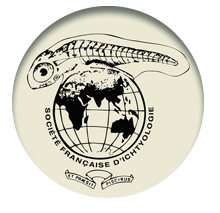Measuring the scientific impact of FishBase after three decades
Corresponding author: Austin T. Humphries, humphries@uri.edu
How to cite: Humphries, A. T., Dimarchopoulou, D., Stergiou, K. I., Tsikliras, A. C., Palomares, M.-L. D., Bailly, N., Nauen, C. E., Luna, S., Banasihan, L. P., Froese, R., & Pauly, D. (2023). Measuring the scientific impact of FishBase after three decades. Cybium, 47(3): 213-224. https://doi.org/10.26028/CYBIUM/2023-002
FishBase (www.fishbase.org) is a global, open access information system about fishes that contains published scientific data on topics such as physiology and behaviour, life-history characteristics, and species distributions. Since its creation in the late 1980s, FishBase has evolved into a highly dynamic and versatile tool for scientists and the public. The goal of this study is to quantify the impact of FishBase using citation analysis. We used three sources to count the number of times FishBase has been cited and the ways in which it has been used: Scopus for citations in peer-reviewed journals, Google Scholar for citations by a variety of items on the Internet, and Google Books for citations in books. Our findings reveal that FishBase has received more than 10,000 citations in total from 1994 to 2020 (up to 1,229 annual citations in 2020) across hundreds of peer-reviewed journals in Scopus, while Google Scholar attributed nearly 15,000 total citations to FishBase, with an average of 1,200+ citations per year from 2017 to 2021. Regions that use FishBase the most are in Europe, United States of America, Brazil, and Australia. Some of the top authors citing FishBase come from fields in agricultural (i.e., aquaculture), biological and environmental sciences, and work on fisheries biology and management, as well as parasitology, among others. Most citations of FishBase use it as a source of data for information on diet composition, fish sizes and length-weight relationships, taxonomy, or fish habitat. With a cumulative number of citations in the peer-reviewed literature exceeding 10,000 in Scopus and 15,000 in Google Scholar, FishBase is in the top 1% of all cited items published in this and the previous century.
Supplementary files
| Fichier attaché | Taille |
|---|---|
| 1.54 Mo | |
| 39.54 Ko |


